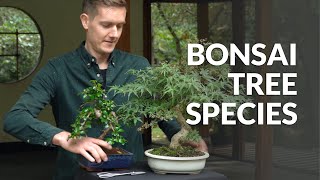Morus Bonsai Care guidelines
Select a sunny location for your Mulberry bonsai, ensuring it receives at least six hours of direct sunlight daily to promote vigorous growth and fruiting. Place it in a spot with good airflow to prevent fungal diseases, and protect it from strong winds and temperature extremes. Maintain temperatures between 60°F to 80°F (15°C to 27°C) in summer to support healthy growth and fruit development.
Water your Mulberry regularly, keeping the soil evenly moist but not waterlogged. Water thoroughly when the top inch of soil feels dry to the touch, adjusting watering frequency based on environmental conditions and seasonal changes. Use well-draining soil to prevent waterlogging, and avoid allowing the bonsai to dry out completely between waterings, especially during hot summer months. Continue reading about watering Bonsai trees.
Watering
Free lecture from the Beginners CourseFeed your Morus bonsai with a balanced, organic fertilizer during the growing season (spring through fall) to support vigorous growth and fruit production. Apply the fertilizer every four to six weeks, reducing or suspending fertilization during the dormant winter months.
Prune your Mulberry regularly to shape the canopy, encourage branching, and promote fruiting. Strong pruning should be postponed if you want the tree to fruit strongly. Remove dead, diseased, or overcrowded branches with sharp pruning tools, and thin out dense growth to improve airflow and sunlight penetration. Wiring can be used to refine the bonsai's structure and create graceful curves, but exercise caution to avoid damaging the delicate branches and remove the wire promptly to prevent wire scars. Continue reading about pruning Bonsai trees.
Repot your Mulberry every two to three years during the early spring before the onset of new growth. Use a well-draining soil mix to promote root health and vigor. Prune the roots moderately to stimulate new growth and maintain the bonsai's overall health. Continue reading about repotting Bonsai trees.
Propagate Mulberry bonsai through seeds, cuttings, or layering for new plants. Collect seeds from ripe fruits and sow them in a well-draining soil mix, providing warmth and humidity to encourage germination. Alternatively, take hardwood or semi-hardwood cuttings from healthy branches and root them in a suitable rooting medium. Consider air layering to propagate branches with desirable characteristics, promoting vigorous root development before transplanting.
Monitor your Mulberry bonsai for common pests such as aphids, scale insects, and caterpillars, which can infest the foliage and fruits. Treat infestations promptly with insecticidal soap or horticultural oil. Watch for signs of fungal diseases such as powdery mildew or leaf spot, and ensure proper airflow and sanitation to minimize the risk of infection. For more detailed information on these techniques, check out our Bonsai tree care section.

Morus nigra, or black mulberry (also called blackberry).

Bonsai de Amoreira
General information about the Mulberry Bonsai tree
Also called the flowering mulberry, the Morus is a genus in the family Moraceae, with about 12 species known als Mulberries. The foliage grows in an alternate pattern, and its fruit grows out into sweet berries. The trees are fast growers upon cultivation but older speciments, depending on the fertilization regime, grow slower.
If you need help identifying your tree, take a look at our Bonsai tree identification guide.





